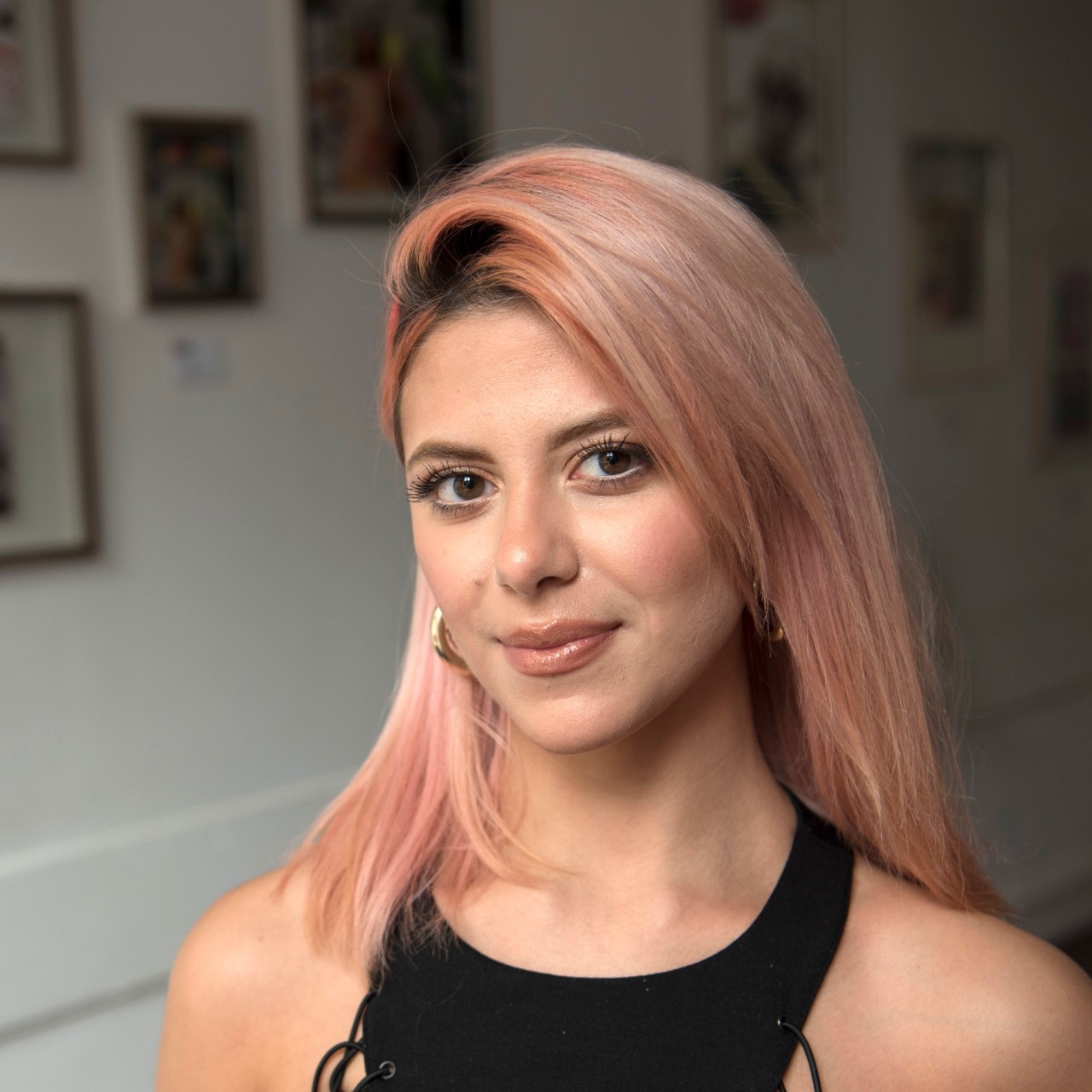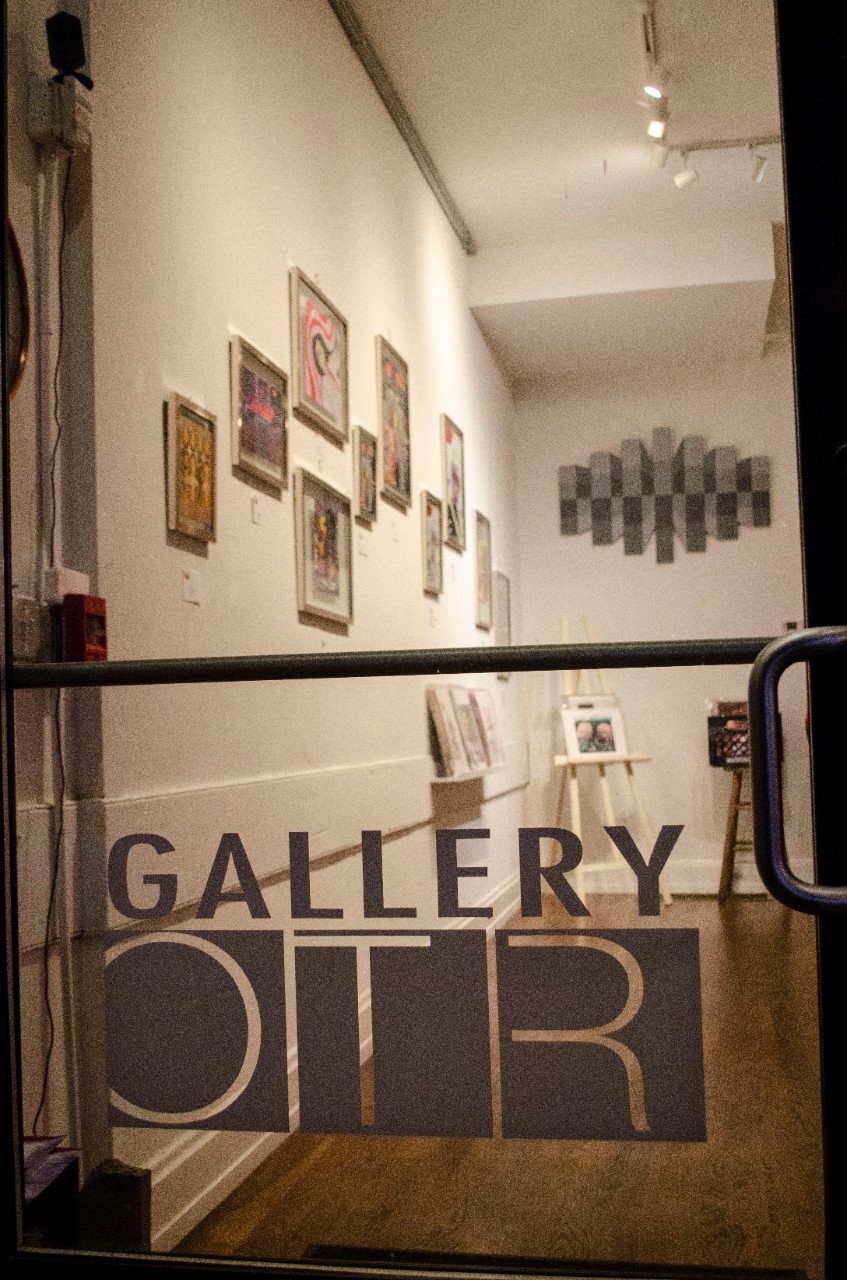


Any time one of us responds to a social media post, the action creates a potential dopamine release in the brain of the poster, a short-term feedback loop not dissimilar to the pleasure felt when biting into a piece of cheesecake or completing a brisk run. It’s a natural response—the neural network in play rewards beneficial actions, encouraging repeat behaviors—hijacked by unnatural conditions (cocaine addiction and compulsive gambling also trek these pathways).
The vast majority of us are affected by social media’s quick-and-dirty dopamine deals on a daily basis. And for today’s students, many born into a world just discovering blogging, social media use carries an extended set of threats.
“Our generation is really big on [social media], and I don’t think it’s very grounding,” says Helena Hetzler, a Brooklyn-born artist and senior art major at Northern Kentucky University. “I think that at some point, there needs to be a line.” Helena’s mixed-media art show, “Girl Unlocked” (it’s currently on display at Gallery OTR in downtown Cincinnati), deals with the damaging impact of social media through photography and collage techniques, exploring one of today’s most pressing issues.
“It’s talking about the anxiety that can come from focusing too much on the superficial or bouncing who you are off a look or aesthetic—it can pick you apart,” says Helena. “Social identity can be fragmented when you focus too much on your looks and that’s what you’re coming back to every day.”
Helena employs various imagery—some original photographs and some appropriated—to assemble collages that take aim at elements of social media she views as damaging. She points to one piece, a digital collage titled “Rise and Shine” that features technological elements such as keyboard keys and a computer mouse woven into a photograph of waffles, as a means to comment on social ills.
 photo courtesy of Helena Hetzler
photo courtesy of Helena Hetzler
“People will usually wake up and, while they’re having breakfast, they’re doing emails,” she says. “Sometimes I think we’re on the fringe of being connected, and that connectedness kind of takes over our lives in a way. The piece does look fun, but it makes you think a little bit about how we just plug right in.”
Another piece, “Wi-Fi Nights,” riffs on the film “Boogie
Nights” with vintage textures and colors and a central image of a couple dancing, their heads replaced by wi-fi signals.
“When you go out, before you even soak up the atmosphere of a place you get to, people will often look around and be like, ‘What’s the wi-fi password?’” Helena explains. “They’re on their phones and taking pictures.
“I’m just taking natural elements and scenes that people would be used to—beauty articles or people on the street or people dancing or having breakfast—and I’m juxtaposing them with this artificial intelligence and elements that are part of our every day. Really, there’s no line.”
For Helena, visual art is just one component of her work, which also includes songwriting and poetry—in fact, the NKU art major considers the written word to be her primary medium. “I grew up in a family of writers,” she says, “so I’m a writer first.” She’s currently preparing her first book of poetry, also titled “Girl Unlocked,” for release soon and explains that the gallery show is meant as a visual extension of themes explored in her poems.
“Visual art is cool because it’s up for interpretation,” she says. “It can resonate with people however you want, whereas with words you can be a lot more to the point about your views on the world or on art or yourself or anything that people can relate to. I am using the pictures and the book to get people thinking about the effects social media can have on our relationship with self and asking the question at what point does connective-ness become disconnection?”
Whether it’s in her visual artwork or poetry, the effect NKU has had on Helena is immense, instilling a work ethic that’s allowed her to focus her creativity and refine her skills.
“I’ve always had the imagination, but now I know what the next step is. They don’t have to stay ideas. Since learning things in the program, I’ve been able to sketch something out, create a mood board or get online and use the software that I need to make stuff. It’s been really awesome to, whatever I want to do, have an idea of how to get a great start on it.”
“Girl Unlocked” is currently on display at Gallery OTR, 1121 Walnut St. in downtown Cincinnati.

